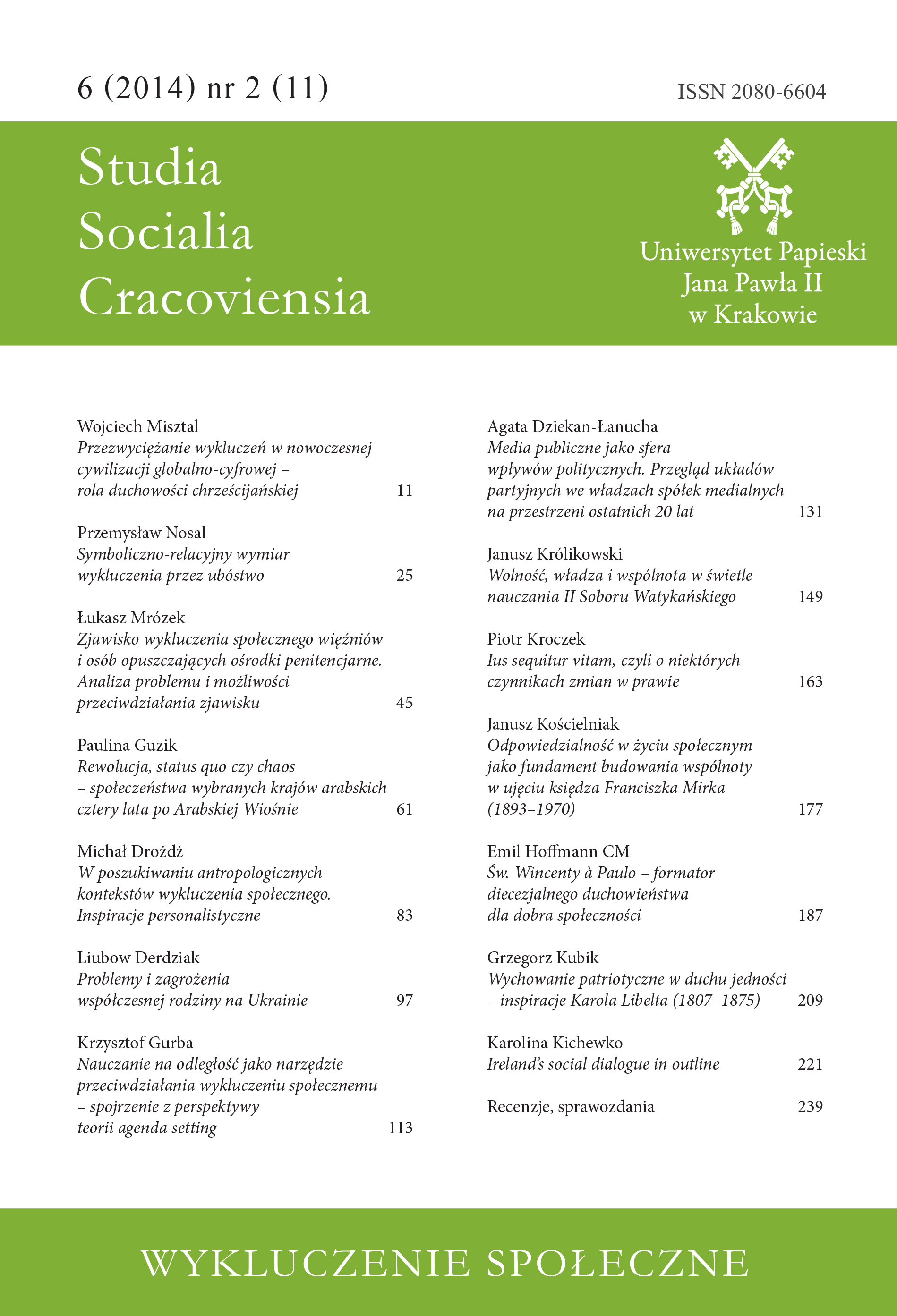Rewolucja, status quo czy chaos – społeczeństwa wybranych krajów arabskich cztery lata po Arabskiej Wiośnie
Revolutionary, stagnant or chaotic? Societies of selected Arab states four years after the Arab Spring
Author(s): Paulina GuzikSubject(s): Social Sciences, Cultural history, Civil Society
Published by: Wydawnictwo Naukowe Uniwersytetu Papieskiego Jana Pawła II w Krakowie
Keywords: Arab Spring; Middle East; democratic revolution; Arab society; “Time”;
Summary/Abstract: The Spring of 2011 in the Arab world and its blooming revolutions were hopeful and precious. The whole world watched as angry masses of young Arabs toppled the regimes, ousting first Tunisia’s Zine El Abedine Ben Aliand then Egypt’s Hosni Mubarak. By the end of the year, with the help of American jet fighters, another bloody dictator was gone – Muamar Kaddafi no longer endangered the people of Libya. Social change was on the way – freedom of speech and freedom to vote were only among other prerogatives of the young civil societies. In 2012 all of those states had new governments and presidents. But something started to go wrong – in democratic elections Islamist took over, not only destabilizing the countries, but fermenting newly born civil societies. In 2014, when the old power is back in Egypt, opposition leaders are being killed in Tunisia and Libya indicated sharia law, the world watches how “the class of 2011” – educated young Arabs that started the revolutions of 2011, will handle the changes. The article analyses changes observed within Arab societies in Egypt, Tunisia and Libya from December 2010 till December 2013. Analyses is based on „Time” magazine articles written about the Arab Spring Countries in the above dates.
Journal: Studia Socialia Cracoviensia
- Issue Year: 6/2014
- Issue No: 2 (11)
- Page Range: 61-81
- Page Count: 21
- Language: Polish

